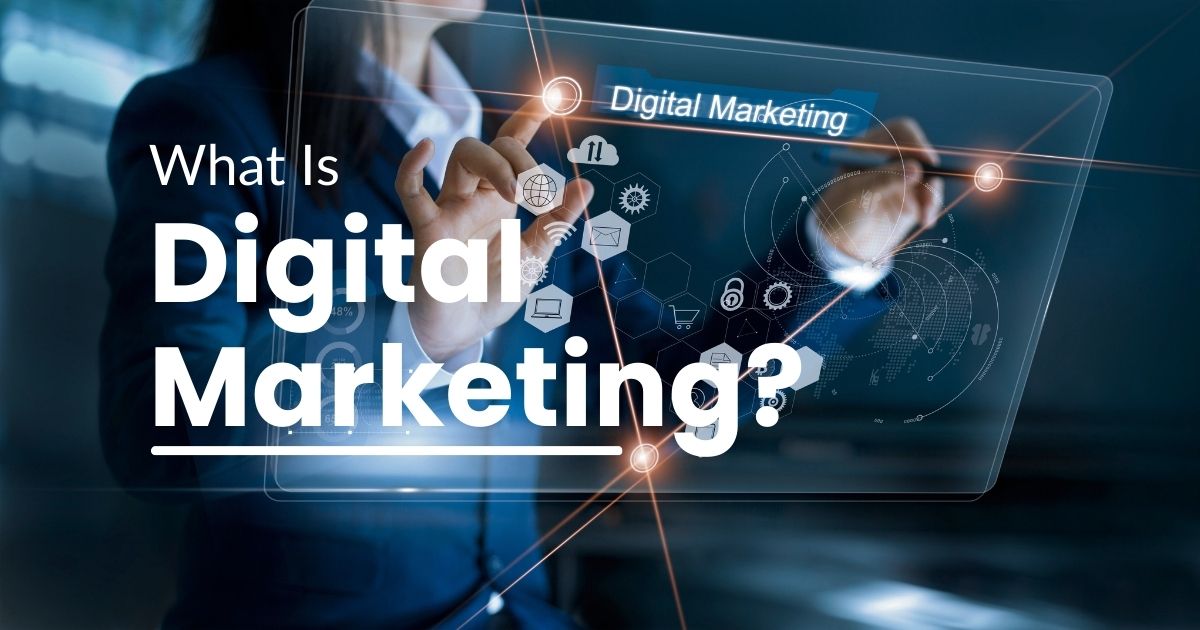Digital marketing encompasses a broad spectrum of online marketing functions. The primary goal of digital marketing is to promote brands through various forms of digital media.
It goes beyond online advertising to encompass platforms that do not necessitate internet connectivity. It incorporates a wide range of marketing tactics and technologies to connect with customers where they spend much of their time: online.
Understanding Digital Marketing

Digital marketing is a comprehensive term that utilizes digital channels, including content marketing, SEO, email marketing, social media marketing, mobile marketing, and more, to promote a brand or product. It involves the use of electronic devices or the internet for promotional messaging and measures the impact through the customer journey Digital marketing in practice usually involves marketing campaigns that are displayed on various devices such as computers, phones, tablets, and more. These campaigns can come in different formats, such as online videos, display advertisements, search engine marketing, paid social media advertisements, and social media posts.
Key Components of Digital Marketing
Content marketing: It aims to engage with prospective clients by utilizing various forms of content. This content is typically shared on a website and further distributed through social media, email marketing, SEO strategies, and sometimes PPC advertising. Content marketing tools encompass blogs, ebooks, online courses, infographics, podcasts, and webinars.
Search Engine Optimization:
SEO involves optimizing content or websites to improve their visibility in search engine results, such as Google. Marketers use SEO to attract people who are searching for topics related to their product or service.
Social Media Marketing:
This includes everything a business does via social media channels. Almost everyone is acquainted with social media, however, marketers need to adopt an integrated and strategic approach to it. Social media marketing goes far beyond just creating posts for social channels and responding to comments.
Pay-Per-Click Advertising (PPC):
PPC is a method of driving traffic to your website by paying a publisher every time your ad is clicked. Google AdWords is a widely used form of PPC, enabling you to secure prominent positions on Google’s search engine results pages by paying for each click on the links you display.
Email Marketing:
Companies utilize email marketing as a means of engaging with their target audiences. Email serves as a valuable tool for promoting content, offering discounts, announcing events, and driving traffic to the company’s website.
Mobile Marketing:
This can include anything from SMS marketing to developing mobile applications. With the increasing prevalence of smartphones, mobile marketing has become a significant mode of reaching customers directly.
The Importance of Digital Marketing
Digital marketing has grown in importance due to its ability to reach a large number of people, but it also offers a number of other advantages. These include the ability to interact with prospects and learn exactly what they are looking for, the ability to reach a global marketplace, the opportunity to save money and reach more customers for less money compared to traditional marketing methods, and the ability to track responses to your marketing efforts immediately.
Conclusion
Digital marketing is an essential part of a comprehensive marketing strategy for any company in today’s digital age. It enables businesses to tailor messages to reach a specific audience, making it possible to market directly to people who are likely to be interested in their product. With the right strategy and effective implementation, digital marketing can lead to remarkable success for any business.






